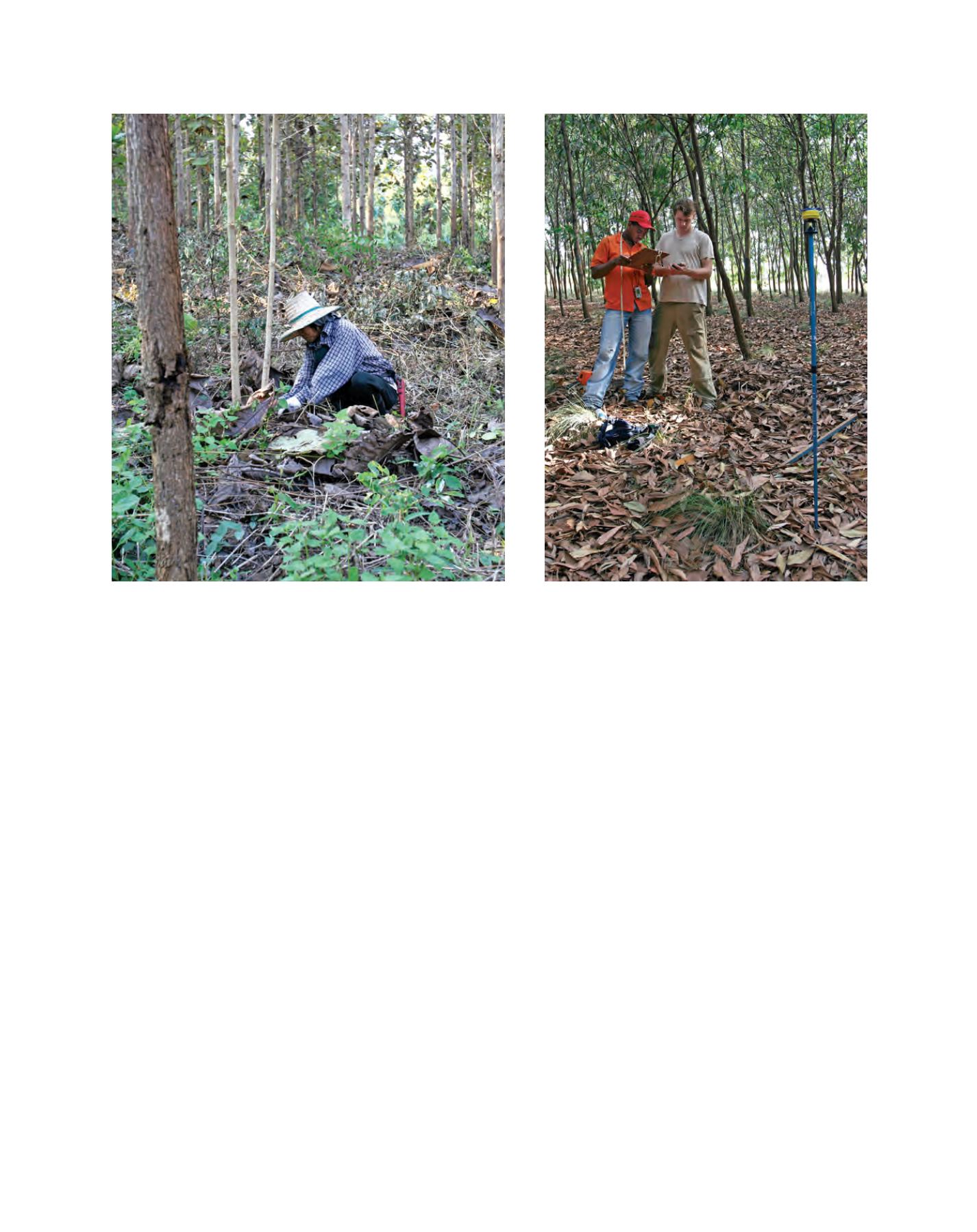

[
] 118
the International Woodland Company in Denmark holds US$2.5
billion under management, distributed to the US (45 per cent),
South America (33 per cent), Oceania (10 per cent), Europe (8 per
cent) and new markets (4 per cent). The latter figure shows the
level of funds flowing into these markets. However, 4 per cent of
a total of US$50 billion equals US$2 billion. Compared to the vast
available areas in developing countries, this is a drop in the ocean.
Forest investments have one dominant objective: commercial
and competitive production of timber for sawn wood or pulp for
local and international markets. While investments in conifers
prevail in northern countries,
eucalypts
, pines, teak, and
acacias
are common in the south. Investment horizons rarely exceed ten
years and commonly lie at minimum around US$10 million for
one deal. Besides those funds channelled through investment
managers in US$10 million parcels, there is a growing number of
smaller projects, where private individuals buy land or shares of
companies that plant trees at a much smaller scale. Particularly
in Europe, a vast number of these providers offer investments in
trees, mainly high-value plantations. Teak dominates the market,
as timber prices rise steadily.
6
Marketing costs however are high
and due at the beginning of the investment period and trees have
to produce interest on them over timespans of up to twenty years.
Thus, there are not only success stories but also failures. Investors
lost considerable amounts because projects were short of mainte-
nance costs for subsequent years after planting and had to be sold
cheaply, or investors had to pump in additional money.
Does money from forest investors actually reach the people on the
ground? Does it contribute to social development and parity in rural
areas? And is the approach of investing in forestry on a
commercial basis sustainable?
There are many positive examples but also exceptions
to those. However, in general, positive answers can be
given to all these questions. A study by FAO has revealed
that sustainability is a major concern to the forestry
investment community. They might not be primarily
concerned with two of three pillars of sustainability, the
social and environmental aspects, but the third pillar,
economic, is their field of expertise. And there is one
common lesson learned in many development projects:
without sustainable economics, other values such as
social and environmental benefits cannot be sustained.
Forest investment projects create monetary value in
rural areas, where it did not previously exist before.
The sustainable management of a natural forest signifi-
cantly contributes to forest conservation in many terms,
including area, biodiversity and environmental services.
Employment is created in rural areas and people receive
training and education, as many commercial projects
see a tremendous benefit in having literate and educated
staff. Rural schools and health stations normally follow
the first wave of development, when forest workers bring
their families to settlements around forest camps and
saw mills. The establishment of planted forests equally
contributes to rural development. Forest plantations
are often established in formerly deforested grassland
areas, which are of only marginal monetary benefit
Weeding forest plantations is creating jobs, particularly for rural women as seen in a
teak forest in Thailand
Forest investments are ideal training grounds for local and
foreign student (Brazil)
Image: R. Glauner
Image: R. Glauner
















